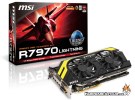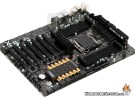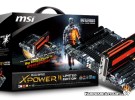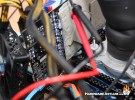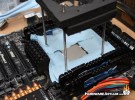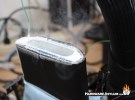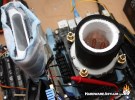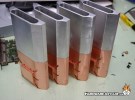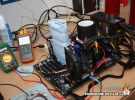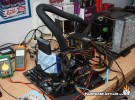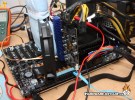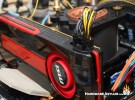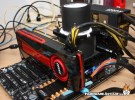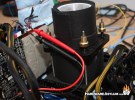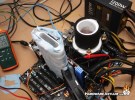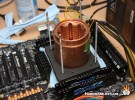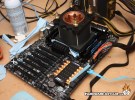How I prepared for the MOA 2012 Americas Qualifier
Author: Dennis Garcia
Published: Sunday, May 20, 2012
Benchmarks and Scores
The part about overclocking that many people fail to understand is that beyond running your hardware faster than it was intended there is very few ways you can compare those results against other people. This is where the benchmark scores come into play. By taking the benchmark result you can quickly measure up your efforts with others. This is what drives Futuremark to keep building benchmarks applications and what keeps avid HWBot members coming back.
Throughout the MOA competition I recorded a total of 57 benchmark results testing various overclocks across the three benchmarks. I only submitted a small number of these which usually included the best scores at the end of my overclocking session.
In the end I am proud to say that I made it thru the elimination round and was in 3rd place for a couple days. My final ranking was 8th place (technically 7th since I tied and had a higher 3DMark 11 score). I was able to hold 6th in 3Dmark 11, 8th in 3Dmark 03 and 13th in SuperPi 32M. The point spread kept me in the running but in the end hardware limitations and hardware selection kept me from doing better.
Throughout the MOA competition I recorded a total of 57 benchmark results testing various overclocks across the three benchmarks. I only submitted a small number of these which usually included the best scores at the end of my overclocking session.
In the end I am proud to say that I made it thru the elimination round and was in 3rd place for a couple days. My final ranking was 8th place (technically 7th since I tied and had a higher 3DMark 11 score). I was able to hold 6th in 3Dmark 11, 8th in 3Dmark 03 and 13th in SuperPi 32M. The point spread kept me in the running but in the end hardware limitations and hardware selection kept me from doing better.
Lessons Learned
I was at a disadvantage going into the competition due to my decision to keep with X79 for all of the benchmarks. Had I used a Z77 or Z68 motherboard my SuperPi 32M score would have been better and I might have had a better chance at getting a higher score in 3DMark 03. All things considered I did extremely well in 3DMark 11 and was within 100 marks of 4th place.
As we know overclocking isn't guaranteed nor are you guaranteed a good GPU even if you pay extra for a Lightning edition video card. What you do get is a video card designed for overclocking matched with whatever chip MSI decides to slap on there. Extreme overclockers like them because there are no modifications to make and hardware enthusiasts like them because they are custom PCBs and come with a factory overclock.
Assuming I did spend the extra bucks to run both LGA 2011 and LGA 1155 I would have been in the contest for the cost of new hardware, namely a new Z68 or Z77 motherboard. My current 2600K will do 5.7Ghz but I really needed 5.9Ghz to be competitive. (e.g. in the top 1% of golden Sandy Bridge processors). People get golden processors all the time and the majority of them don't even know it. The way I see it, I got lucky once and the chance of getting something worse was greater than getting something better.
All things considered I felt my MOA bid was a strong one, I learned some stuff and was able to grab the attention of some folks who, had otherwise, never paid much attention to me before. Neither of which are a bad thing.
As we know overclocking isn't guaranteed nor are you guaranteed a good GPU even if you pay extra for a Lightning edition video card. What you do get is a video card designed for overclocking matched with whatever chip MSI decides to slap on there. Extreme overclockers like them because there are no modifications to make and hardware enthusiasts like them because they are custom PCBs and come with a factory overclock.
Assuming I did spend the extra bucks to run both LGA 2011 and LGA 1155 I would have been in the contest for the cost of new hardware, namely a new Z68 or Z77 motherboard. My current 2600K will do 5.7Ghz but I really needed 5.9Ghz to be competitive. (e.g. in the top 1% of golden Sandy Bridge processors). People get golden processors all the time and the majority of them don't even know it. The way I see it, I got lucky once and the chance of getting something worse was greater than getting something better.
All things considered I felt my MOA bid was a strong one, I learned some stuff and was able to grab the attention of some folks who, had otherwise, never paid much attention to me before. Neither of which are a bad thing.
Available Images

